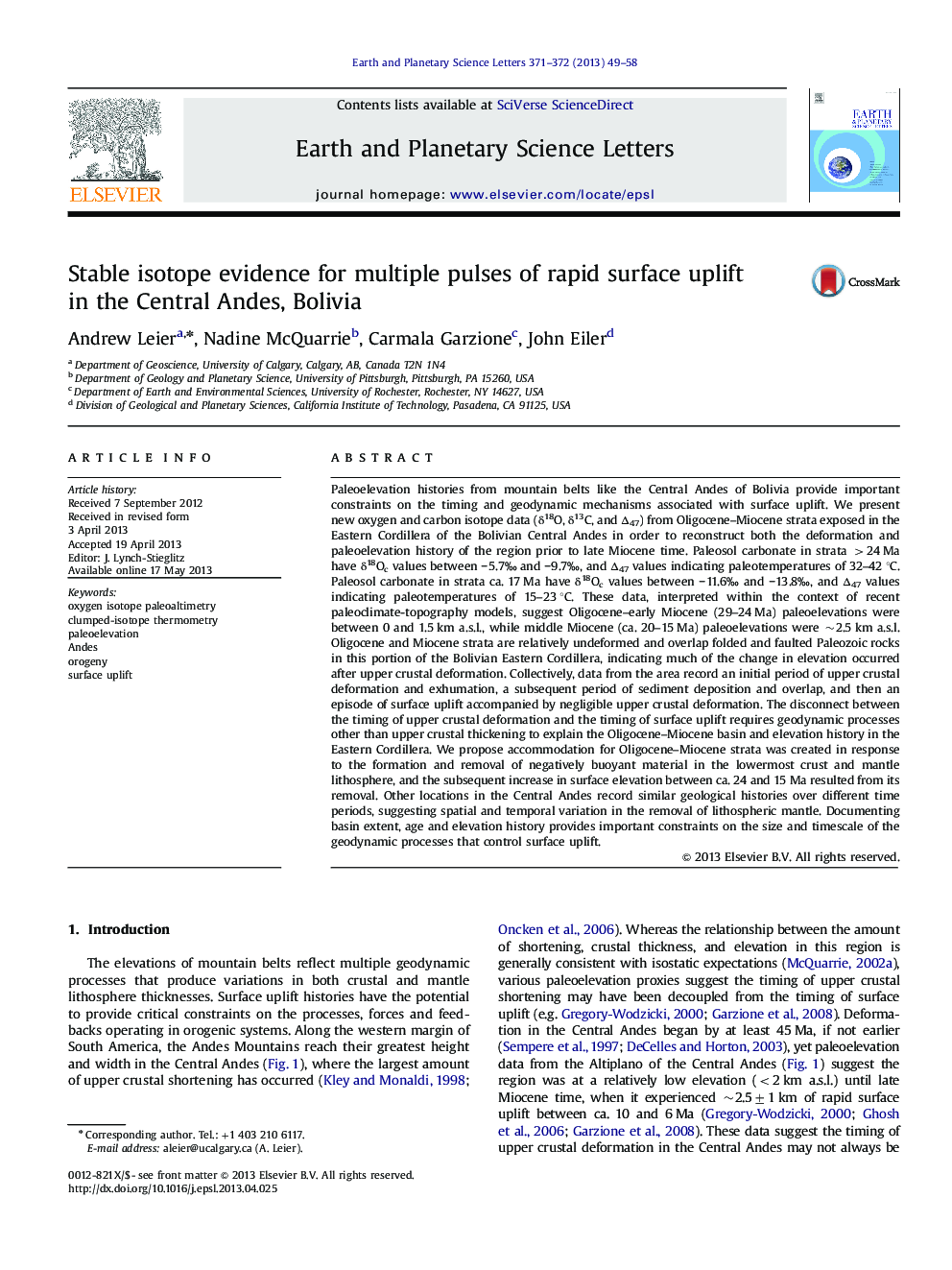| کد مقاله | کد نشریه | سال انتشار | مقاله انگلیسی | نسخه تمام متن |
|---|---|---|---|---|
| 4677210 | 1634783 | 2013 | 10 صفحه PDF | دانلود رایگان |

• We use oxygen isotope data to reconstruct the paleoelevation of the Central Andes.
• The Central Andes experienced rapid surface uplift of ~1 km in the early Miocene.
• Surface uplift was not concomitant with crustal deformation.
• The removal of lower crust and lithosphere likely precipitated surface uplift.
Paleoelevation histories from mountain belts like the Central Andes of Bolivia provide important constraints on the timing and geodynamic mechanisms associated with surface uplift. We present new oxygen and carbon isotope data (δ18O, δ13C, and Δ47) from Oligocene–Miocene strata exposed in the Eastern Cordillera of the Bolivian Central Andes in order to reconstruct both the deformation and paleoelevation history of the region prior to late Miocene time. Paleosol carbonate in strata >24 Ma have δ18Oc values between −5.7‰ and −9.7‰, and Δ47 values indicating paleotemperatures of 32–42 °C. Paleosol carbonate in strata ca. 17 Ma have δ18Oc values between −11.6‰ and −13.8‰, and Δ47 values indicating paleotemperatures of 15–23 °C. These data, interpreted within the context of recent paleoclimate-topography models, suggest Oligocene–early Miocene (29–24 Ma) paleoelevations were between 0 and 1.5 km a.s.l., while middle Miocene (ca. 20–15 Ma) paleoelevations were ~2.5 km a.s.l. Oligocene and Miocene strata are relatively undeformed and overlap folded and faulted Paleozoic rocks in this portion of the Bolivian Eastern Cordillera, indicating much of the change in elevation occurred after upper crustal deformation. Collectively, data from the area record an initial period of upper crustal deformation and exhumation, a subsequent period of sediment deposition and overlap, and then an episode of surface uplift accompanied by negligible upper crustal deformation. The disconnect between the timing of upper crustal deformation and the timing of surface uplift requires geodynamic processes other than upper crustal thickening to explain the Oligocene–Miocene basin and elevation history in the Eastern Cordillera. We propose accommodation for Oligocene–Miocene strata was created in response to the formation and removal of negatively buoyant material in the lowermost crust and mantle lithosphere, and the subsequent increase in surface elevation between ca. 24 and 15 Ma resulted from its removal. Other locations in the Central Andes record similar geological histories over different time periods, suggesting spatial and temporal variation in the removal of lithospheric mantle. Documenting basin extent, age and elevation history provides important constraints on the size and timescale of the geodynamic processes that control surface uplift.
Journal: Earth and Planetary Science Letters - Volumes 371–372, June 2013, Pages 49–58